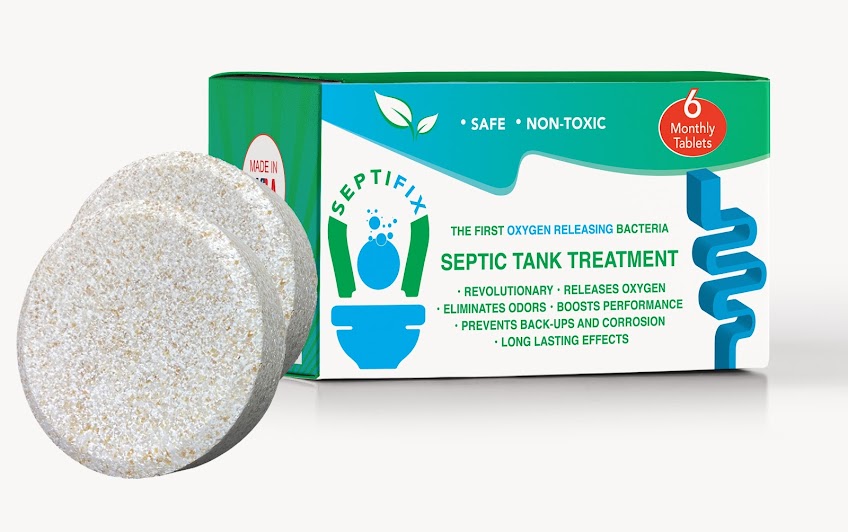How To Clean A Septic Tank Filter
Septic tanks are best fitted with an effluent filter, also known as tank outlet filter. This is installed in the outlet of the septic tank and is a huge help in preventing solid waste from getting into the leach field along with the treated wastewater. The effluent filter is made of slotted plastic, which allows liquid to pass through. These slots, however, are small enough so that larger solid particles will not make it through. These solid waste materials, when allowed to accumulate without periodic cleaning, may clog up your septic tank’s outlet pipe. And an un-maintained, inefficient, or absent outlet filter can allow solid matter to reach the drainfield, causing it to clog and eventually fail. Some jurisdictions actually mandate the installation of outlet filters. But even if your local government does not require outlet filters in your area, you should seriously consider attaching one as they help avoid problems that may lead to septic failure.
Get Local Septic Tank Service Here
As with your septic tank as a whole, septic tank outlet filters do require maintenance. These fixtures need regular cleaning to avoid irreversible clogging. The build-up of solid waste in your septic tank filter simply means it is doing its job. But you would not want this to go un-checked and permanently jam up your entire septic system. Here, we will discuss a step-by-step guide to cleaning your septic tank filter, helpful to all DIY advocates, especially if it is your first time to do so.
If you have decided to clean your septic tank filter yourself, it is important to dress properly for the task. Full-length pants with a long-sleeved shirt, water resistant and heavy-duty shoes or boots, gloves, and work goggles are minimum requirements if you are to undertake the cleaning of your septic tank filter.
In cleaning your septic tank filter, you will (and should!) encounter an access riser. It is installed over the access opening of your septic tank. An access riser facilitates the maintenance of your septic tank and septic outlet filter. Without a doubt, proper and regular maintenance of the septic tank as well as your outlet filter is necessary for improved functionality and lifespan of your entire septic system. The access riser helps you and your septic contractor locate the septic tank access port easily.
Steps to Cleaning A Septic Tank Filter
Step #1. Unscrew the septic tank outlet riser and remove the access lid of your septic tank. If the lid to your septic tank is above-ground, you should be able to spot it easily. But if the tank you have is buried underground, make sure that you are aware of the measurements or dimensions and the location of your tank lid (or lids) beforehand to avoid accidental breakage or falls. If you do not have this information on-hand, contact your local health department and they should be able to assist you in locating your septic system’s access lid.
Step #2. The septic tank filter is installed inside the outlet baffle (or “tee”). Remove the filter cartridge by carefully lifting it out of the septic vault. You may use a small hoe or rake or pull it out by hand. Just make sure you are wearing gloves if you do use your hands. Hold the effluent filter over the open port of the septic tank so the effluent can flow back into the tank. Use a hose and spray nozzle to lightly spray the cartridge tubes with water in order to remove solid material stuck to the insides.
Step #3. Inspect the filter’s vent hole and other crevices. Spray these openings with water to clear off any debris, before restoring the filter cartridge back into the baffle or tee. Make sure to securely replace the cartridge back into its saddle holes at the top of the cartridge vault. Take note as there may be arrows or indicators on the filter to guide you in proper installation.
Step #4. Replace the riser lid back on the septic tank and securely, firmly screw back the lid.
Step #5. Once done, it is essential to clean up the area of any spillage. Also, immediately change your clothes and wash and sanitize your hands after the task has been completed.
Most health offices recommend that septic tank filters be cleaned every 3 to 6 months. Some effluent filters, though, are built with an alarm that is activated when the filter requires cleaning. If what you have is one of these models, you need to periodically monitor that the alarm is actually functional by lifting the float switch so the alarm will sound off. If your effluent filter doesn’t come equipped with an alarm system and you would like one, contact your local septic system installer.
Why Your Septic Tank Needs a Filter
In a perfect world, the only thing that should find its way onto your drainfield is wastewater. Only wastewater. Unfortunately in reality, hair, grit and, worse, solid waste matter can end up in your absorption system. It is for this very reason why every septic tank system needs an outlet filter installed. The ideal standard is that all septic tanks should be fitted with an effluent filter or tank outlet filter. A septic tank filter is installed in the outlet of the tank and significantly helps prevent anything other than liquid waste from getting into your drainfield or from clogging your tank’s outlet pipe. Also, the accumulated solid waste can actually cut the flow of wastewater from the septic tank and into your drainfield. This may cause flooding in your tank. This is why some local governments impose a mandate on the installation of septic tank filters. And even if your locality does not have this mandate, it would still be wise to have this installed.
Get Local Septic Tank Service Here
Your septic tank outlet filter acts like an effective screening device when installed properly in the outlet of your septic tank. This device protects your entire septic system by filtering effluent as it leaves your septic tank on its way to the drainfield. This outlet filter prevents solid waste matter from leaving together with the effluent and end up clogging your drainfield. A clogged drainfield potentially causes flooding and may even result to the failure of your entire leach field system, not yet counting the significant health risks for those living within the vicinity. Septic tank filters are a very affordable means to improve the efficiency of your septic tank system and even extend its lifespan. They can help prevent home and business owners from incurring costly repairs due to failed septic systems.
Besides that a well-maintained septic tank outlet filter helps protect your property investment, several states or localities actually mandate the installation of septic tank outlet filters in all new septic tanks. And if you have an older septic tank without a built-in outlet filter, it should be easy to have one fitted. A professional septic tank company can easily help you install a new filter, clean, or replace an existing one. Have this done, if you haven’t already. Right away.
How Often Should You Clean Your Septic Filter?
Even a well-maintained, functional septic tank outlet filter will eventually become clogged as effluent leaves the tank and travels to your drainfield. Build-up of solid waste in your septic tank filter simply means your filter is functioning as it should. As solid waste matter accumulates in the outlet filter, you will notice slow drains within your home or establishment.
Septic tank filters should be cleaned as soon as you observe slow or sluggish drains and/or gurgling sounds at every drain in your house or establishment. The minimum standard is that you likewise get your effluent filter cleaned at least every time you have your septic tank pumped. However, it pays to keep in mind that more frequent cleanings for your effluent filter may be necessary. Each septic system is unique, and the frequency of maintenance requirements will vary, specific to a particular septic system and its components.
Septic tanks need to be pumped regularly and periodically in order to remove the sludge and scum that are not broken down as rapidly with the typical digestive process in the septic tank. The more responsible septic owner will remember to include his or her septic tank filter in this routine. Typically, your septic tank filter will function for several years before cleaning is actually required. However, it is still best to observe the minimum standard of having your septic tank filter cleaned whenever your tank is pumped. That is, at least every 2 to 5 years.
Remember that without regular and proper maintenance of your septic tank outlet filter, sewage could back up into your home or establishment. Sluggish drains and gurgling noises coming from your plumbing system are top indicators that your septic tank and, possibly, your septic filter needs a thorough cleaning and routine maintenance. It is always best to contact a trained septic system professional to install a new filter, replace, or clean out your current unit.
How to Keep Your Septic Tank Clean
A well-maintained septic system should present you with minimal, if any, problems. Follow these recommendations to help keep your septic system healthy and in good working condition.
Have your septic tank pumped regularly. What happens in a septic tank is that solid waste settles at the bottom and scum floats to the top. Excess liquid (effluent) travels out to the drainfield, either by gravity or with the aid of a septic pump. If your septic tank is fitted with an outlet filter, it is important to learn how to clean and care for this installation, as well. While it’s true that bacteria digest (break down) the solid matter in the septic tank, pumping is still necessary to avoid build-up of solid waste. If you have a pump system equipped with an alarm, test the alarm periodically to check for functionality.
Pumping the septic tank costs around $200 to $300 (may vary by location). It will cost more if digging is required in order to locate the tank. How frequently pumping is required will depend on the size of the tank and number of occupants in the household or facility. A good average in pumping frequency is about every 1 to 5 years. The use of garbage disposal units increases the frequency for pumping requirements. As a rule of thumb, a 1,000 gallon (3,785.4 liters) tank servicing four people in a household or facility without a garbage disposal unit, pumping every 2 to 3 years is normal. For a household or facility with 2 occupants, every 4 to 5 years is good. When you have your tank pumped, consider having it inspected as well to ensure the system and its components are in good working order.
Observe conservative water usage. Your septic tank can handle only so much water at any given time. The tank needs enough time to separate the solid and liquid wastes before sending the effluent to the drainfield. Keep an eye out for running toilets and leaky faucets. Consider installing low-flow or high-efficiency toilets and water fixtures. Also, keep your laundry load size manageable. Make it a point to space your laundry loads over several days rather than voluminous loads at a time. This allows your septic tank sufficient time to recover. Additionally, set your washing machine properly according to load size; that is, washing a small load on the large load setting tends to be wasteful, water wise.
Keep heavy equipment away from the tank’s location. Do not park anything heavy on the ground over your septic tank or drainfield. Avoid driving vehicles, operating heavy machinery, and building structures (such as a shed, garage, or above-ground pool) over said locations. These can damage the septic tank, its components, and pipes. Doing so compromises the effectiveness of the drainfield, not to mention are in violation of mandates in most jurisdictions.
Do not flush or pour non-biodegradables and chemicals down your toilets and drains. Objects or substances that cannot be broken down naturally can clog your septic tank and drainfield. Furthermore, chemicals and synthetic substances can kill the helpful bacteria that break down waste matter. Do not treat your septic tank like a garbage bin. These items listed below should never find their way into your septic tank:
- Feminine hygiene products like sanitary pads and tampons
- Diapers and baby wipes
- Cigarette butts
- Kitty litter
- Cotton swabs (especially those with plastic stems)
- Coffee grounds
- Paper towels
- Condoms
- Household chemicals like bleach
- Gasoline, motor oil, paint, and other industrial substances
- Grease (like bacon fat, oils, etc.)
Avoid using garbage disposal units. If you have a septic tank, it is not advisable to install a garbage disposal unit. Or if you need to have one, always use a garbage disposal sparingly. It is also best if our garbage disposal unit does not empty out into your septic system. Excessive use of a garbage disposal unit can clog your drainfield and cause more water waste. The use of a garbage disposal unit (especially one that drains into the septic tank) is a typical mistake. This unit won’t break down food or solid particles enough to allow them to pass through the septic tank filter. A food or garbage disposal unit increases the amount of solids in the septic tank by as much as 50%. Flushing plastic materials, disposable diapers, paper towels, non-biodegradable products and tobacco will also clog the system. Using a garbage disposal unit ultimately translates to more frequent pumping of the septic tank necessary, ideally once in every year.
Use only septic-safe products. Environmentally-friendly soaps and cleaning aids are generally safe to use if your property runs its own dedicated septic system. Use only septic-safe toilet paper, too. With wet cloths (baby wipes and similar products), however, it is best to never flush them down the toilets, even if its label reads as “septic-safe”. It is still best to dispose of them in garbage bins. Also, avoid using synthetic septic additives or cleaners too much. They are not totally helpful, and may even harm the pH and bacteria colonies in your tank.
Keep tank surroundings conducive. Cut down (and relocate) all large trees and shrubs growing near your septic tank and drainfield. Keep the area clear of roots as the roots of trees can pervade and damage pipes and the tank itself. Be especially wary of trees with truculent roots like willow trees. Tree and shrub roots are naturally drawn to the septic areas because of the fertilizing nutrients present in waste, but if these grow into your system, damages are likely to occur. Similarly, if your drainfield and/or septic tank is near water run-off from the roof or the surface, install gutters and divert water away from these areas.
If you are feeling the bother from your septic system becoming clogged and with needing to clean the filter frequently, you might be tempted to simply remove it. Do not do this! Remember that septic tanks work by facilitating the separation of waste into three layers: solids (sludge), effluent and scum. The solids settle at the tank’s base where microorganisms digest them. The scum, made up of “lighter than water” waste, floats on to the top. The remaining middle layer (known as effluent) exits the tank and travels through perforated pipes underground into your drainfield. There, gravel and soil act as biological filters to purify the wastewater as it sinks into the ground. It is your septic tank outlet filter that helps make sure that this balance in the system is maintained.
Chances are, your state health code requires that you have an effluent filter installed. Even if your locality does not have this mandate, it pays to keep it in place. Removing the septic tank outlet filter could create a far worse (and expensive) problem for your system and, eventually, your property and its occupants. Without the filter, solid waste particles could pass into the perforated pipes and clog them. It would require extensive digging to clean and unclog the system of perforated pipes.
Most filters don’t have to be cleaned until your septic tank is due for a pumping, which is typically every two to five years. This is a good schedule to follow because, let’s face it: it is likely that you are, from time to time, letting filter-clogging (non-biodegradable) materials down your drain (like grease, fat or food scraps).
Keep in mind that the maintenance of your septic tank outlet filter is ideally carried out by professional septic service providers. The process is best accomplished with the use of personal safety equipment for protection against harmful pathogens in the wastewater.
https://www.gcph.info/files/resources/How_To_Clean_your_Septic_Tank_Filter.pdf
https://www.doityourself.com/stry/how-to-clean-a-septic-tank-filter
https://inspectapedia.com/septic/Septic_Filter_Maintenance.php
https://thepinkplumber.com/news/is-it-time-to-clean-the-effluent-filter
https://www.doh.wa.gov/Portals/1/Documents/Pubs/337-122.pdf
https://www.in.gov/isdh/files/Outlet_Filters_Brochure.pdf
https://www.flohawks.com/blog/how-often-should-the-septic-tank-outlet-filter-be-cleaned/











